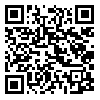Volume 64, Issue 9 (1 2006)
Tehran Univ Med J 2006, 64(9): 10-18 |
Back to browse issues page
Download citation:
BibTeX | RIS | EndNote | Medlars | ProCite | Reference Manager | RefWorks
Send citation to:



BibTeX | RIS | EndNote | Medlars | ProCite | Reference Manager | RefWorks
Send citation to:
Zamani T.R Sh, Zavaran Hosseini A, Mesbah Namin S.A. The role of 6-Aminonicotinamide in the resistance of peritoneal macrophages against Leishmania major infection in BALB/c mouse. Tehran Univ Med J 2006; 64 (9) :10-18
URL: http://tumj.tums.ac.ir/article-1-895-en.html
URL: http://tumj.tums.ac.ir/article-1-895-en.html
Abstract: (10866 Views)
Background: The objective of this study was to investigate the relationship between glucose-6-phosphate dehydrogenase inhibition in macrophages treated with 6-Aminonicotinamide, the amount of nitric oxide (NO) production and the resistance of infected macrophages against Leishmania major infection.
Methods: Peritoneal macrophages of BALB/c mice were isolated and treated with different concentrations (1.25, 2.5, 5, 10 mM) of 6-aminonicotinamide. After 24 hours, the viability of treated macrophages was measured by MTT assay at 540 nm. G6PD activity was measured in the cell extracts 24 hours later. Macrophages were then infected with leishmanial amastigotes and after 18 hours NO production was determined using Griess-reagent. In order to study the inhibition of macrophage activity, 5 mM concentration of 6-AN was used and number of leishmanial amastigotes was recorded in these cells from day 1 to7.
Results: Different concentrations of 6-AN were shown to cause a significant increase in cell death and decrease in G6PD activity and NO production in macrophages. Also, the number of amastigotes in macrophages was increased significantly (p < 0.05).
Conclusion: The concentration of 6-aminonicotinamide and G6PD activity affect the viability of BALB/c mice peritoneal macrophages through production of NO. Inhibition of G6PD activity leads to decreased leishmani-cidal activity of mouse peritoneal macrophages.
Methods: Peritoneal macrophages of BALB/c mice were isolated and treated with different concentrations (1.25, 2.5, 5, 10 mM) of 6-aminonicotinamide. After 24 hours, the viability of treated macrophages was measured by MTT assay at 540 nm. G6PD activity was measured in the cell extracts 24 hours later. Macrophages were then infected with leishmanial amastigotes and after 18 hours NO production was determined using Griess-reagent. In order to study the inhibition of macrophage activity, 5 mM concentration of 6-AN was used and number of leishmanial amastigotes was recorded in these cells from day 1 to7.
Results: Different concentrations of 6-AN were shown to cause a significant increase in cell death and decrease in G6PD activity and NO production in macrophages. Also, the number of amastigotes in macrophages was increased significantly (p < 0.05).
Conclusion: The concentration of 6-aminonicotinamide and G6PD activity affect the viability of BALB/c mice peritoneal macrophages through production of NO. Inhibition of G6PD activity leads to decreased leishmani-cidal activity of mouse peritoneal macrophages.
| Rights and permissions | |
 |
This work is licensed under a Creative Commons Attribution-NonCommercial 4.0 International License. |





